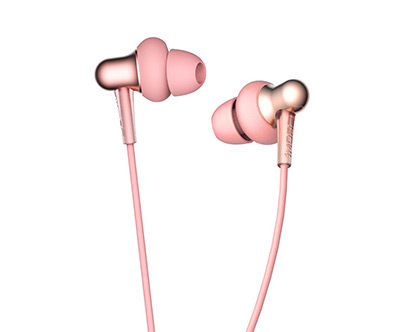 Afrikaans
Afrikaans  Albanian
Albanian  Amharic
Amharic  Arabic
Arabic  Armenian
Armenian  Azerbaijani
Azerbaijani  Basque
Basque  Belarusian
Belarusian  Bengali
Bengali  Bosnian
Bosnian  Bulgarian
Bulgarian  Catalan
Catalan  Cebuano
Cebuano  Corsican
Corsican  Croatian
Croatian  Czech
Czech  Danish
Danish  Dutch
Dutch  English
English  Esperanto
Esperanto  Estonian
Estonian  Finnish
Finnish  French
French  Frisian
Frisian  Galician
Galician  Georgian
Georgian  German
German  Greek
Greek  Gujarati
Gujarati  Haitian Creole
Haitian Creole  hausa
hausa  hawaiian
hawaiian  Hebrew
Hebrew  Hindi
Hindi  Miao
Miao  Hungarian
Hungarian  Icelandic
Icelandic  igbo
igbo  Indonesian
Indonesian  irish
irish  Italian
Italian  Japanese
Japanese  Javanese
Javanese  Kannada
Kannada  kazakh
kazakh  Khmer
Khmer  Rwandese
Rwandese  Korean
Korean  Kurdish
Kurdish  Kyrgyz
Kyrgyz  Lao
Lao  Latin
Latin  Latvian
Latvian  Lithuanian
Lithuanian  Luxembourgish
Luxembourgish  Macedonian
Macedonian  Malgashi
Malgashi  Malay
Malay  Malayalam
Malayalam  Maltese
Maltese  Maori
Maori  Marathi
Marathi  Mongolian
Mongolian  Myanmar
Myanmar  Nepali
Nepali  Norwegian
Norwegian  Norwegian
Norwegian  Occitan
Occitan  Pashto
Pashto  Persian
Persian  Polish
Polish  Portuguese
Portuguese  Punjabi
Punjabi  Romanian
Romanian  Russian
Russian  Samoan
Samoan  Scottish Gaelic
Scottish Gaelic  Serbian
Serbian  Sesotho
Sesotho  Shona
Shona  Sindhi
Sindhi  Sinhala
Sinhala  Slovak
Slovak  Slovenian
Slovenian  Somali
Somali  Spanish
Spanish  Sundanese
Sundanese  Swahili
Swahili  Swedish
Swedish  Tagalog
Tagalog  Tajik
Tajik  Tamil
Tamil  Tatar
Tatar  Telugu
Telugu  Thai
Thai  Turkish
Turkish  Turkmen
Turkmen  Ukrainian
Ukrainian  Urdu
Urdu  Uighur
Uighur  Uzbek
Uzbek  Vietnamese
Vietnamese  Welsh
Welsh  Bantu
Bantu  Yiddish
Yiddish  Yoruba
Yoruba  Zulu
Zulu Design and Functionality of Bearing Housing for Idler Rollers in Machinery Applications
Bearing Housing for Idler Roller An Essential Component in Mechanical Systems
In the realm of mechanical engineering, the bearing housing for idler rollers plays a pivotal role in ensuring optimal performance and reliability of various machinery. Idler rollers are integral to numerous applications, including conveyor systems, mining equipment, and manufacturing processes. Understanding the significance of bearing housing in the context of idler rollers is essential for engineers and operators alike, as it directly impacts efficiency, maintenance, and operational longevity.
What is Bearing Housing?
Bearing housing is a protective casing that houses bearings, providing support and alignment for rotating components within machinery. In the case of idler rollers, bearing housings are specifically designed to accommodate the bearings that enable the rollers to spin smoothly. This housing must be robust enough to withstand the operational conditions while providing the necessary lubrication to extend bearing life.
Importance of Bearing Housing
1. Alignment and Support Proper alignment is critical for the smooth operation of idler rollers. A well-designed bearing housing ensures that the bearings are held in the correct position, minimizing wear and tear on both the bearings and the rollers. Misalignment can lead to increased friction, overheating, and eventually premature failure of components.
2. Protection from Contaminants In heavy-duty environments, such as construction sites or factories, idler rollers are exposed to dust, dirt, moisture, and other contaminants. The bearing housing serves as a shield, protecting bearings and internal components from these harmful elements. This protection is vital for maintaining the integrity and performance of the machinery over time.
3. Heat Dissipation During operation, bearings generate heat due to friction. An effective bearing housing design incorporates features that facilitate heat dissipation, ensuring that the bearings operate within their optimal temperature range. Excessive heat can lead to lubrication breakdown and, ultimately, severe damage to the rollers and surrounding equipment.
bearing housing for idler roller

4. Ease of Maintenance Modern bearing housings often come with features that simplify maintenance tasks. For instance, some designs allow for easy access to bearings for inspection and replacement without having to disassemble the entire roller system. This accessibility reduces downtime and operational costs, as maintenance can be performed more efficiently.
5. Vibration Damping Machinery often experiences vibrations during operation, which can negatively impact performance and lead to structural issues over time. A well-engineered bearing housing can help dampen these vibrations, providing a more stable operating environment for idler rollers and associated components.
Materials and Design Considerations
The selection of materials for bearing housing is crucial. Common materials include cast iron, aluminum, and steel, each offering unique advantages in terms of strength, weight, and resistance to corrosion. The design should also consider factors such as load-bearing capacity, environmental conditions, and thermal expansion properties.
Furthermore, the dimensions of the bearing housing must be tailored to fit the specific requirements of the idler roller system. This includes not only the diameter and width but also the alignment features and mounting options. A precise design ensures that the housing can support the operational loads without failure.
Conclusion
The bearing housing for idler rollers is an indispensable component within various mechanical systems, contributing significantly to their functionality and efficiency. From providing support and alignment to protecting against contaminants and facilitating maintenance, the importance of bearing housings cannot be overstated. As technology evolves, so too does the design and manufacture of these critical components, with ongoing innovations aimed at enhancing durability and performance.
For engineers and operators, understanding the nuances of bearing housing can lead to better choices in machinery design and maintenance practices, ultimately resulting in increased uptime and productivity. Therefore, investing in high-quality bearing housings and adhering to best practices for installation and maintenance is essential for the longevity of idler roller systems and the machinery they support.
-
Revolutionizing Conveyor Reliability with Advanced Rubber Lagging PulleysNewsJul.22,2025
-
Powering Precision and Durability with Expert Manufacturers of Conveyor ComponentsNewsJul.22,2025
-
Optimizing Conveyor Systems with Advanced Conveyor AccessoriesNewsJul.22,2025
-
Maximize Conveyor Efficiency with Quality Conveyor Idler PulleysNewsJul.22,2025
-
Future-Proof Your Conveyor System with High-Performance Polyurethane RollerNewsJul.22,2025
-
Driving Efficiency Forward with Quality Idlers and RollersNewsJul.22,2025





























